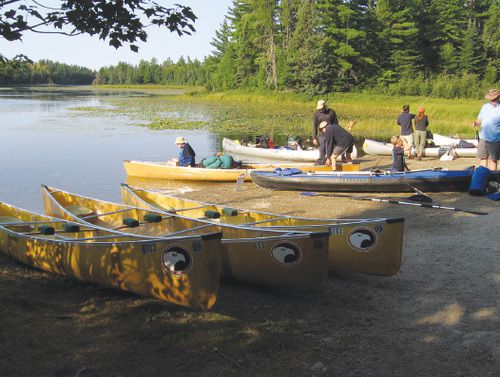(Photo: U.S. Forest Service)
Is it a problem that the average age of a visitor to the Boundary Waters Canoe Area Wilderness is approaching twice that of the average age in the 1960s?
That’s a question arising from the release of a study of BWCA use today by the U.S. Forest Service.
A 1969 survey found the average age of a visitor to the wilderness was 26. That increased to 36 in 1991 and 45 in the latest survey, based on data obtained in 2007.
More troubling, perhaps, is that people who have only a high school education don’t visit the BWCA much. Ninety-three percent of visitors have some college, have graduated from college, or have advanced degrees. That compares to 49 percent in the 1969 survey.
Nearly three-quarters of surveyed overnight visitors in 2007 were male, the survey says. “While this number is high, it has not increased significantly. The proportion of females appears to have remained stable at the BWCAW over time, with fluctuation over the past 40 years remaining between 25 and 30 percent of the overnight visitors,” it said.
People visiting the BWCA saw, on average, about four other groups per day in the wilderness. In the 1991 survey visitors felt the BWCA was “crowded” in at least a few places “Visitors in 1991 were also more likely to find it unpleasant to meet more than two paddle groups per day and increasing encounters affected them more negatively than 1969 visitors,” the previous survey indicated.
But maybe we’re more tolerant of “crowds” now.
A significant change in response to this question was found, with fewer than 40% saying they did not experience crowded conditions in 2007, decreasing from 44% in 1991 and from 72% in 1969. Over half felt it was crowded in at least a few places in 2007, a big change from 1969 when only 24% reported crowding in at least a few places. Consistently, fewer than 10%
in all three studies reporting crowding in most places they visited on their trips, though it went up from 2% in 1969 to 9% in 2007. Of the individuals who felt it was crowded at least in some places in 2007, 81% were either a little or moderately bothered by the amount of people (compared to 56% in 1991 and 84% in 1969). Only 12% were bothered a lot in 2007. Only 2% reported in 2007 that they changed the length of their trip due to crowding, while 17% changed the route of their trip. Finally, 28% of all overnight visitors in 2007 reported crowding would affect their plans to visit the BWCAW.
The latest survey also shows the changing nature of Minnesota and the U.S. Visitors today are half as likely to have grown up on a farm, “much more likely to have grown up in a major city or metro area and are also more likely to live in a major city or metro area of over 1 million people,” it said.
The most common complaint about the BWCA is litter and the difficulty of obtaining a day use permit.
|
EARLIER TODAY ON NEWSCUT
Five by Eight: Why are African American students disciplined more often? |

